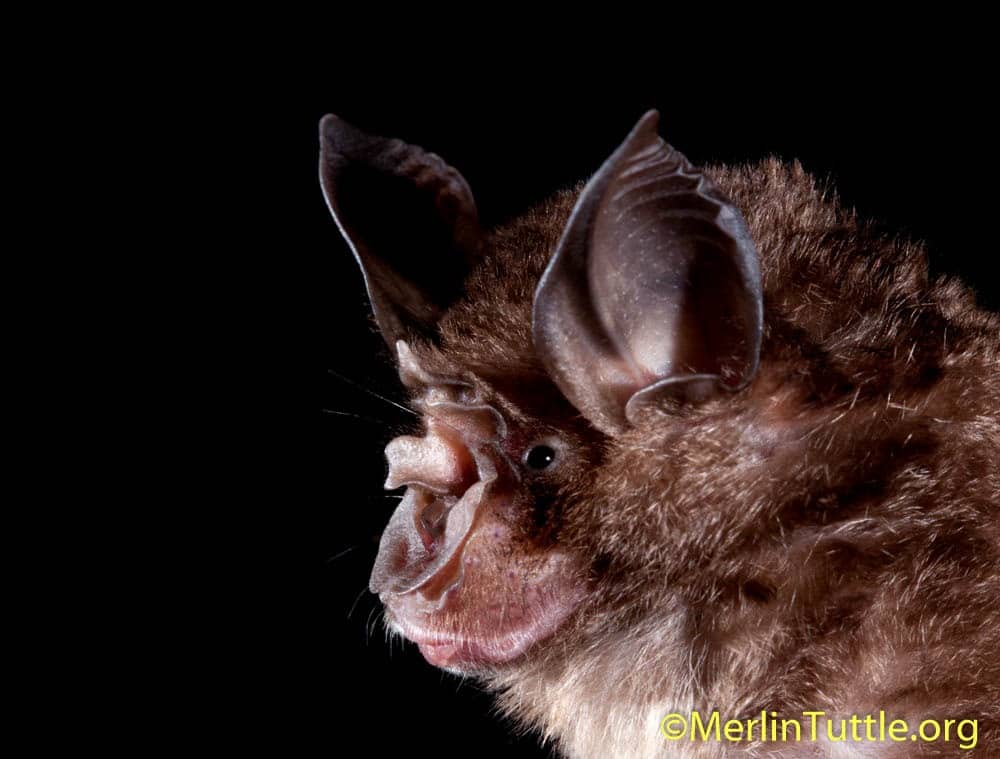By Merlin Tuttle
Updated 03/26/20
The source of human exposure to the COVID-19 virus, or as it was first called, Wuhan virus, according to the March 12th edition of The Conversation, has yet to be identified. However, in a rush to judgment, far too many public health officials and media outlets are focusing almost entirely on bats. This has been seen in multiple news sources, from CNN to Vice. Such speculation can be counterproductive, especially when acted on as fact.
Bats, despite their essential ecological and economic roles, rank among our planet’s most rapidly declining and endangered animals1. They have few defenders and are often mistakenly viewed as dangerous. People who fear bats are less tolerant and frequently kill them 2.
Fear is needlessly created when virologists emphasize potentially distant evolutionary relationships that shed little light on where and how a virus is actually transmitted to humans. Bats are currently believed to harbor more kinds of viruses than other mammals. But even if true, there is no credible documentation of higher risk of transmission3. Most viruses are innocuous or even beneficial 3,4.
Bats, like any living organism, are capable of harboring scary viruses, yet transmission is rare, typically only to humans who carelessly handle a bat that bites in self-defense, followed by failure to seek medical attention. Nipa virus, in India and Bangladesh, is acquired by drinking unpasteurized palm juice, eating unwashed fruit, or associating with sick pigs5.
For more than a decade, virologists have used increasingly sophisticated technology to disproportionately search for new viruses in colonial bats6. New viruses can be found by looking no farther than our own human bodies, and they’re all related at some level4! We’re 96 percent genetically identical to chimpanzees7.
Scientists at Singapore’s Bioinformatics Institute examined a key surface protein on the COVID-19 virus and found it just 79 percent genetically similar to SARS, noting that these viruses “are like comparing a dog and a cat.” 8 This flies in the face of widespread claims of similarity.

Portrait of a Chinese horseshoe bat (Rhinolophus sinicus). The species ranges from northern India to southern China. Horseshoe Bats are so named due to their horseshoe-shaped nose-leaves. They are often found in caves or cave-like locations and feed mostly on small moths, many of which are pests to humans. They use exceptionally high frequency echolocation to avoid detection by moths that listen for bat sounds, thereby attempting to avoid capture.
Finding the immediate source and mode of COVID-19 virus transmission to humans is key. Premature speculation presented as fact simply impedes efforts to prevent new exposure because resources are misallocated. The location of the initial transmission hasn’t even been confirmed yet. In fact, thirteen of the first forty-one infected humans had not visited the Wuhan wet market9.
Stories in Newsroom and The Scientist quoted leading virologists as predicting that the COVID-19 virus would ultimately be traced to bats. Then, when genetic analysis pointed to a snake origin10, it was claimed that the snakes (many banded crates and Chinese cobras) must have been infected by bats, continuing to emphasize a bat origin. The same followed for pangolins11. Scientists who in 2018 concluded that horseshoe bats were the source of SARS12 still insist on a bat origin in the case of the COVID-19 virus, though their claim has itself been questioned13.
Despite numerous efforts, bats still have not been credibly documented as transmitters of SARS to humans13. Even if bats did play a background role by infecting civets, control in humans had to focus on reducing contact with civets, not bats14.
In the case of MERS, bats were yet again the initial focus in the search for a source of human outbreaks. However, camels were eventually identified as the sole source15. Misdirecting attention from documented sources of human infection, in order to blame bats, needlessly decreases tolerance of bats while deflecting caution from other animals of far higher risk.
Arguments over historic lineages are unlikely to solve current problems.
The bias on sampling colonial bats is understandable. Compared to snakes or other animals, they are by far the easiest to quickly capture and process, have few defenders, and are already widely feared. Associating bats with rare, little-known viruses provides tempting opportunities for quick publication, big grants, and career advancement15.
Nevertheless, history does not support this bias. The great pandemics have come from birds, rodents or primates, not bats16. In truth, bats have one of our planet’s finest records of living safely with humans2,15.
We have a long history of co-association, in caves, thatched huts, and log cabins. Millions of humans in Africa, Asia, and the Pacific and Indian Ocean Islands still eat bats17. Thousands of inhabitants of the Old-World tropics spend countless hours in bat caves collecting guano for fertilizer. Thousands of sport cavers explore caves worldwide. Millions of Africans share their cities with huge bat colonies15, all without detected disease outbreaks.
Even Ebola, which has been widely attributed to bats and intensely searched for in them, has not been confirmed from bats18. According to the January 28 article in Business Insider, even if we were to assume that all human deaths from the major so-called “emerging” diseases – i.e. viruses like Ebola, SARS and MERS, and now COVID-19 – came from bats, this would account for just 15,698 human deaths combined over several decades. These numbers are trivial compared to 59,000 deaths annually from dog-transmitted rabies19 or 23,000 U.S. deaths from the flu just this season20. Why are we focusing so much on rare mortality sources while virtually ignoring those of far greater importance?
Finally, reactions to the new COVID-19 virus appear to be exaggerated. If this rush to judgment turns out to be a false alarm, will future threats be taken seriously? If speculation proves inaccurate, not only bats but the credibility of scientists could be harmed. The best approach is rapid detection and response, not prediction22.
TAKE ACTION!
Our combined voices can make a difference. The following publications have misleadingly presented facts about bats. We urge you to politely share your opinion in your own words with the editors, authors and organizations. You may find our resource, Give Bats a Break, additionally helpful in composing your reply. Editors do take notice. Remember, your response can be very simple such as, “I don’t appreciate misleading presentation of facts that create needless fear of bats.” Editors just need to know you like or dislike an article in order for you to have impact. It’s numbers that count. Bats need all of you! Tell a friend about bat values and how they can help.
- Contact The New York Times
- Email the Editor, Letters@nytimes.com, corrections@nytimes.com
- Facebook @nytimes
- Twitter @nytimes
- Contact CNN
- Email the Editor, cnn.feedback@cnn.com
- Facebook @cnn
- Twitter @cnn
- Contact Vice
- Email the Editor, Erika Allen erika.allen@vice.com
- Facebook @vice
- Twitter @vice
- Contact Newsroom
- Email the Editors, Mark Jennings mark.jennings@newsroom.co.nz and Tim Murphy tim.murphy@newsroom.co.nz
- Email the author, Farah Hancock farah.hancock@newsroom.co.nz
- Facebook @newsroomnz
- Twitter @newsroomnz
- Contact The Scientist
- Email the Editor, Bob Grant bgrant@the-scientist.com
- Facebook @thescientistmagazine
- Twitter @thescientistllc
- Contact Business Insider
- Email the Editor, Nicholas Carlson nicholas@businessinsider.com
- Email the author, Aylin Woodward awoodward@businessinsider.com
- Facebook @businessinsider
- Twitter @businessinsider
- Contact BBC News
- Email (or phone call!), www.bbc.co.uk/contact/complaints
- Facebook @bbcnews
- Twitter @bbcnews
References
- O’Shea, T.J., Cryan, P.M., Hayman, D.T.S., Plowright, R.K., and Streicker, D.G. (2016). Multiple mortality events in bats: a global review. Mammal Review 46, 175–190.
- Tuttle, M.D. (2017). Fear of Bats and its Consequences. Journal of Bat Research & Conservation 10.
- Moratelli, R., and Calisher, C.H. (2015). Bats and Zoonotic Viruses: Can We Confidently Link Bats With Emerging Deadly Viruses? Memorias do Instituto Oswaldo Cruz 110, 1–22.
- Enriquez, J., and Gullans, S. (2015). Evolving Ourselves: How Unnatural Selection and Nonrandom Mutation are Changing Life on Earth (Current).
- Nipah virus (2020). World Health Organization. https://www.who.int/news-room/fact-sheets/detail/nipah-virus.
- Anthony, S.J., Johnson, C.K., Greig, D.J., Kramer, S., Che, X., Wells, H., Hicks, A.L., Joly, D.O., Wolfe, N.D., Daszak, P., et al. (2017). Global patterns in coronavirus diversity. Virus Evolution 3.
- Mikkelsen, T.S., Hillier, L.W., Eichler, E.E., Zody, M.C., Jaffe, D.B., Yang, S.P., Enard, W., Hellmann, I., Lindblad-Toh, K., Altheide, T.K., et al. (2005). Initial sequence of the chimpanzee genome and comparison with the human genome. Nature 437, 69–87.
- Chang Ai-Lien (2020). Wuhan Virus and Sars Are as Different as Cats and Dogs, Researchers Say. The Straits Times. https://www.straitstimes.com/singapore/wuhan-virus-vs-sars-as-different-as-cat-and-dog.
- Eschner, K. (2020). We’re still not sure where the Wuhan coronavirus really came from. Popular Science. https://www.popsci.com/story/health/wuhan-coronavirus-china-wet-market-wild-animal/.
- Ji, W., Wang, W., Zhao, X., Zai, J., and Li, X. (2020). Homologous recombination within the spike glycoprotein of the newly identified coronavirus may boost cross‐species transmission from snake to human. Journal of Medical Virology, jmv.25682.
- Zhang, T., Wu, Q., and Zhang, Z. (2020). Probable Pangolin Origin of 2019-nCoV Associated with Outbreak of COVID-19. SSRN Electronic Journal.
- Cyranoski, D. (2017). Bat cave solves mystery of deadly SARS virus — and suggests new outbreak could occur. Nature 2019 552:7683.
- Racey, P.A., Fenton, B., Mubareka, S., Simmons, N., and Tuttle, M. (2018). Don’t misrepresent link between bats and SARS. Nature 553, 281.
- Luk, H.K.H., Li, X., Fung, J., Lau, S.K.P., and Woo, P.C.Y. (2019). Molecular epidemiology, evolution and phylogeny of SARS coronavirus. Infection, Genetics and Evolution 71, 21–30.
- Tuttle, M.D. (2017). Give Bats a Break. Issues in Science and Technology 33.
- Outbreak: 10 of the Worst Pandemics in History (2020). Masters of Public Health Online. https://www.mphonline.org/worst-pandemics-in-history/.
- Mickleburgh, S., Waylen, K., and Racey, P. (2009). Review Bats as bushmeat: a global review.
- Kock, R., Begovoeva, M., Ansumana, R., and Suluku, R. (2019). Searching for the source of Ebola: the elusive factors driving its spillover into humans during the West African outbreak of 2013–2016. OIE Scientific and Technical Review 38, 113–117.
- Plummer, J.R., and McGettigan, J.P. (2019). Incorporating B cell activating factor (BAFF) into the membrane of rabies virus (RABV) particles improves the speed and magnitude of vaccine-induced antibody responses. PLoS neglected tropical diseases 13, e0007800.
- Weekly U.S. Influenza Surveillance Report (2020). Center for Disease Control and Prevention. https://www.cdc.gov/flu/weekly/index.htm.
- Holmes, E.C., Rambaut, A., and Andersen, K.G. (2018). Pandemics: Spend on surveillance, not prediction. Nature 558, 180–182.



